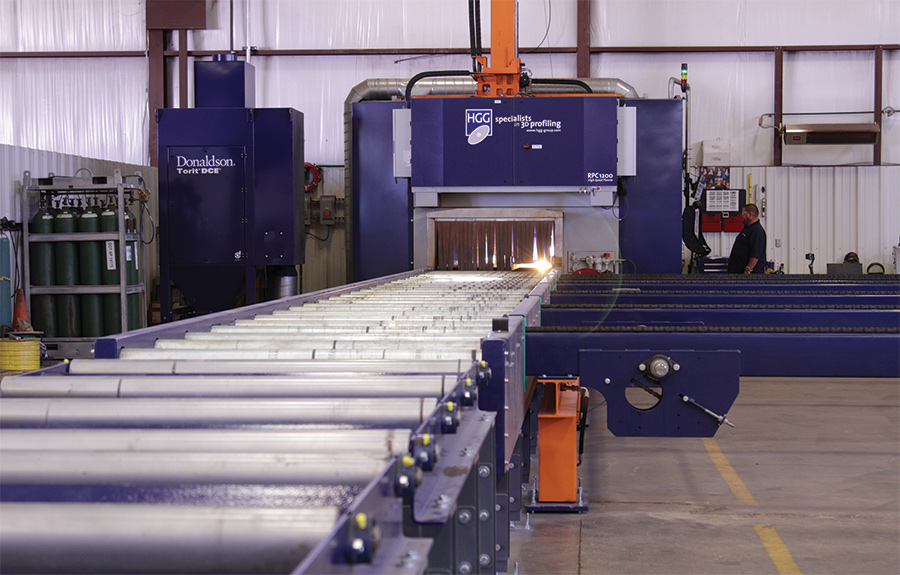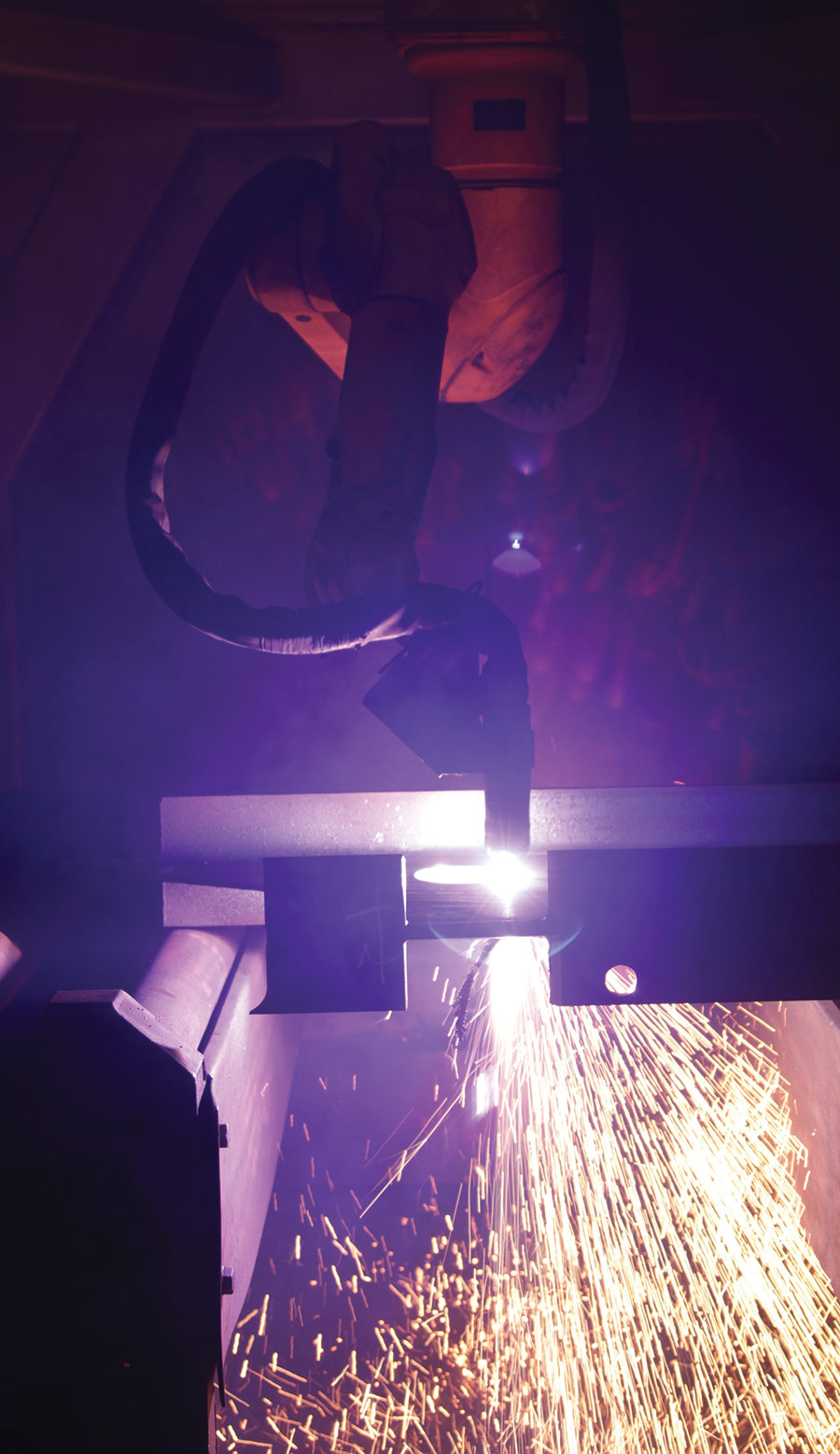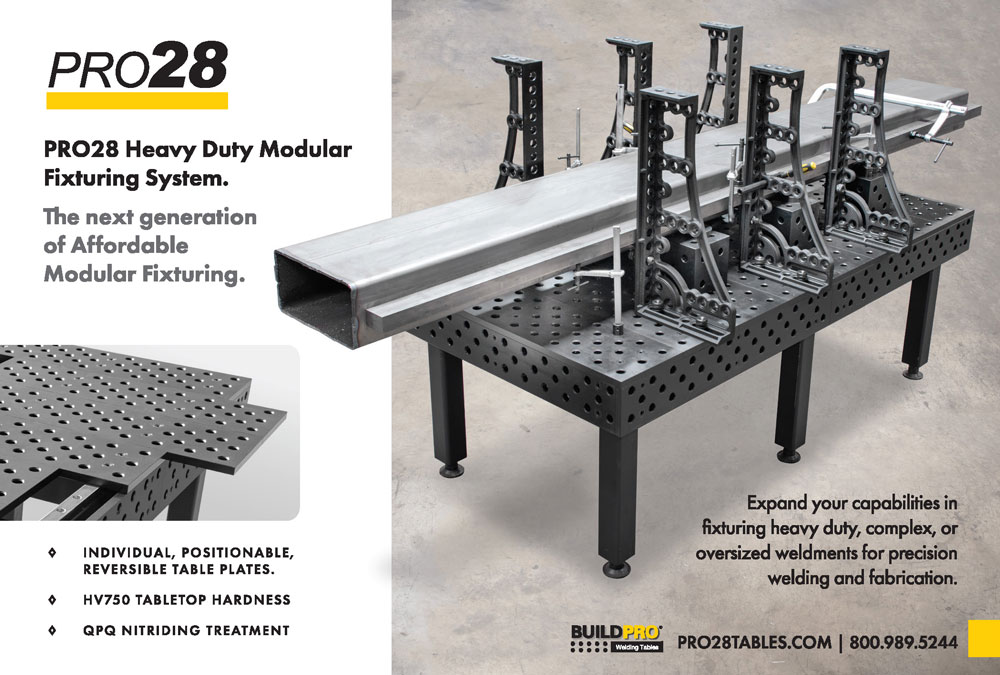
he American Welding Society predicts the U.S. could see a shortage of 400,000 skilled welders by 2024. Older welders are reaching retirement age at a high rate while younger welders are not filling the gap fast enough. Experts suggest a couple courses of action to help solve the problem.
First, companies need to do more to entice younger people to consider the trades as an option to a four-year college education. Secondly, manufacturers and fabricators should look more closely at the latest advanced automation. FIM opted for the latter.
The job shop and custom steel fabricator opened its doors in 2012 in Seminole, Texas, with seven employees. The company has since grown to a workforce of 85 personnel with annual sales of $20 million.

“A large agricultural customer relied on us seasonally to produce and fabricate agricultural processing equipment,” says FIM General Manager Stan Kornelsen. “They gave us large orders three or four months out of the year. With our skilled welder workforce, we could only handle so much of their work. Consequently, they started sending more and more of their business to other companies. We simply did not have the manpower to support their needs.”
FIM found it also had to turn away work from other companies, including oil and gas customers.
 For every hour the machine runs, five man hours of welding time are saved.
For every hour the machine runs, five man hours of welding time are saved. 
FIM found it also had to turn away work from other companies, including oil and gas customers.
To clear the bottleneck and address its welding skills deficit, FIM installed a plasma beam cutting and processing machine at its Fabrication division. The technology was ideal for performing 3D profiling from beam coping to cutting I/H beams and square/rectangular profiles. It was important that the machine be able to cut and prepare both welded and bolted connections, a feature that would relieve human welders of the task. FIM also wanted a machine that could dramatically reduce the need for secondary operations such as grinding and welding cut parts. This would ensure that welders were freed to “use their valuable time for what they are skilled to do best: weld,” Kornelsen says.
After careful analysis of several OEMs’ equipment options, FIM specified the HGG RPC-1200 robotic beam cutting line. Also known as the beam profiler, the RPC-1200 cuts and prepares ready-to-fit parts for both welded and bolted connections. FIM chose the equipment for a number of reasons.
Although the HGG machine did not cut parts fastest, it delivered the fastest overall throughput on FIM’s 60-ft. beam and subsequent 10-ft. part. Quality and support requirements were also included in the time study equation.

“To a large degree, that might be because HGG uses Stäubli Robotics,” Kornelsen says. Stäubli Robotics has the “accuracy, repeatability and capability to interface with HGG software, rather than integrating third-party robots and software,” he notes. “This capability eliminated the time to wind and unwind the robotic arm.”
“No two beams are ever the same coming out of the mill, which means they can vary by as much as ½ in.,” Kornelsen says. “While other manufacturers use a probing method, which means the head of the robot comes down and then makes contact with the beam to determine exact size to make subsequent adjustments, the RPC-1200 accomplishes this by scanning the material as it enters the cutting cell. This capability reduces overall throughput process time.”
Along with getting better quality profiles and faster overall throughput, FIM decided the RPC-1200 could improve productivity because less grinding would be required after the parts were cut.
Since the RPC-1200 was installed and its operators were trained, FIM has been satisfied with the results. “The HGG machine has dramatically improved throughput,” says Kornelsen. “We’ve been able to triple the amount of work we can perform for our agricultural customer and in a short window of time.
“It’s also reduced welder rework and almost eliminated any quality control issues, including holes that were laid out incorrectly or that were drilled in the wrong spot. We figure that the RPC-1200 saves FIM as much as 40 percent to 50 percent on additional welder rework. As long as the part drawings are correct to begin with and the part program that is downloaded from our off-line center is correct, the RPC-1200 simply cuts what it’s programmed to cut.”
During the process of machine evaluation, FIM principals visited HGG’s manufacturing headquarters in Holland to evaluate machine capabilities firsthand. During that visit, they learned that HGG has its own job shop and machine manufacturing facility on site.
“The fact that HGG maintains its own job shop and uses its own machinery to perform contract cutting really stood out to me,” says Kornelsen. “Because of it, HGG has more real-world experience than other manufacturers. There is only so much testing that can be done on a hypothetical part. Unless you’re cutting on a regular basis on your own machinery, you simply cannot cross all of the same bridges that manufacturers and fabricators encounter.”


